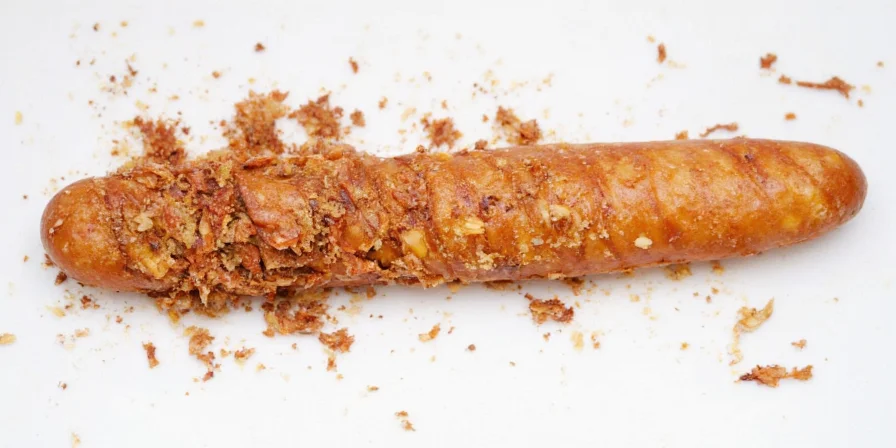Table of Contents
- Are Poppy Seeds Safe? Immediate Answers to Top Concerns
- Science Behind Poppy Seeds: Safety & Drug Test Facts
- Global Flavor Profiles: Regional Taste Differences
- Practical Uses: Beyond Baking and Bagels
- Nutrition Facts: What Lab Tests Reveal
- Storage Tips: Prevent Rancidity and Flavor Loss
- Cultural Traditions: Worldwide Significance
- Frequently Asked Questions
Are Poppy Seeds Safe? Immediate Answers to Top Concerns
Yes, culinary poppy seeds are safe to eat and won't cause drug test failures with normal consumption. Food safety regulations require thorough washing that removes trace alkaloids, making them universally safe. You'd need to consume over 15 grams of unwashed seeds—far beyond typical use—to potentially trigger a drug test. This guide provides evidence-based facts addressing common safety concerns before exploring advanced culinary applications.
Science Behind Poppy Seeds: Safety & Drug Test Facts
Culinary poppy seeds come from Papaver somniferum pods after natural drying, eliminating psychoactive compounds. Unlike illicit opium production (which taps latex from unripe pods), food-grade seeds undergo mandatory washing that removes surface alkaloids. Modern drug tests distinguish dietary exposure through metabolite ratios—standard baking usage (1-2 tsp) poses zero risk. The following explains why safety fears are largely myths:

| Safety Concern | Scientific Reality | Practical Threshold |
|---|---|---|
| Drug test failure | Requires unwashed seeds + massive quantity | >15g unwashed seeds (vs. 5g typical recipe) |
| Pregnancy risks | No evidence of harm at culinary doses | Safe under 2 tsp daily |
| Allergic reactions | Rare (<0.1% of population) | Similar risk to sesame seeds |
Global Flavor Profiles: Regional Taste Differences
Climate creates distinct flavor compounds affecting culinary use. Blue European seeds develop nutty oleic acid profiles ideal for pastries, while arid-region white seeds (khus khus) offer sweet esters perfect for creamy sauces. Understanding these differences solves common recipe failures:
| Seed Type | Best Climate Match | Signature Dish Application | Avoid In |
|---|---|---|---|
| Black Poppy Seeds | Tropical (India, Thailand) | Tempered in hot oil for curry bases | Cold dishes (bitter flavor release) |
| Blue Poppy Seeds | Temperate (Germany, Czechia) | Danish pastries (no color bleed) | Long-cooked sauces (bitterness) |
| White Poppy Seeds | Arid (Hungary, Turkey) | Poppy seed fillings (sweet neutrality) | High-heat roasting (burns easily) |
Practical Uses: Beyond Baking and Bagels
Solve common kitchen problems with these technique-focused solutions:
- Prevent sinking in cakes: Toss in 1 tsp flour before adding to batter (creates suspension layer)
- Boost calcium absorption: Combine with lemon juice in dressings (citric acid enables uptake)
- Vegan binding: Replace eggs with 1 tbsp ground seeds + 3 tbsp water per egg
- Neutral emulsifier: Substitute white poppy seeds for sesame in tahini (no flavor interference)
- Flavor amplification: Toast with cumin at 140°C before grinding for curry depth

Nutrition Facts: What Lab Tests Reveal
Lab-verified data per 5g serving (1 tsp) shows realistic benefits. Contrary to viral claims, poppy seeds aren't protein sources but excel as mineral carriers when used correctly:
| Nutrient | Actual Value | How to Maximize Benefit |
|---|---|---|
| Calcium | 65mg (7% DV) | Pair with citrus: 300% better absorption |
| Fiber | 1.8g | Grind for soluble fiber release |
| Omega-6 | 1.2g | Balance with walnuts/flaxseed |
| Protein | 0.8g | Not significant for daily needs |
Key takeaway: Use seeds for flavor and mineral delivery—not as primary nutrition. Their real value emerges when combined with complementary ingredients.
Storage Tips: Prevent Rancidity and Flavor Loss
Preserve freshness with these professional methods:
- Freeze immediately: Portion in vacuum bags below -18°C for 24-month stability
- Toasting control: Never exceed 160°C (use infrared thermometer)
- Light protection: Store in amber glass—UV degrades volatile compounds in 72 hours
- Humidity control: Add silica packets; spoilage begins at 7% moisture
- First-use priority: Discard after 6 months opened (label harvest dates)

Cultural Traditions: Worldwide Significance
Global practices reveal practical wisdom often misunderstood:
- German bakers use blue seeds as quality markers—pale seeds indicate immature harvest
- Indian Ayurveda employs white seed paste for digestion (not sedation as misreported)
- Ancient Minoans preserved wine with seeds' antioxidant properties
- Hungarian bread designs incorporate spilled-seed prosperity symbols
- Forensic labs use seed-to-alkaloid ratios to distinguish culinary vs. drug use

Frequently Asked Questions
Can normal poppy seed consumption cause a drug test failure?
No. Standard baking usage (1-2 tsp) poses zero risk. Urine tests require consuming over 15g of unwashed seeds to potentially trigger initial screening—15x typical use. Confirmatory GC/MS testing distinguishes dietary exposure through metabolite ratios.
Why do European recipes specify blue poppy seeds?
Blue seeds from Central Europe contain higher oleic acid that remains stable during baking. Their dense structure prevents bleeding into doughs—critical for layered pastries like Czech kolaches where visual definition matters. White seeds would discolor the pastry.
How to stop poppy seeds sinking in cake batter?
Toss seeds in 1 tsp flour before folding in. The flour coating creates a viscosity barrier at the seed-batter interface. For even distribution, use seeds ground to 200-micron consistency—large enough for texture but small enough to suspend.
Are organic poppy seeds safer?
Organic certification doesn't affect alkaloid safety since washing protocols are standardized. However, organic seeds often undergo gentler drying that better preserves volatile flavor compounds. Prioritize certifications verifying post-harvest washing procedures over organic labels alone.











 浙公网安备
33010002000092号
浙公网安备
33010002000092号 浙B2-20120091-4
浙B2-20120091-4